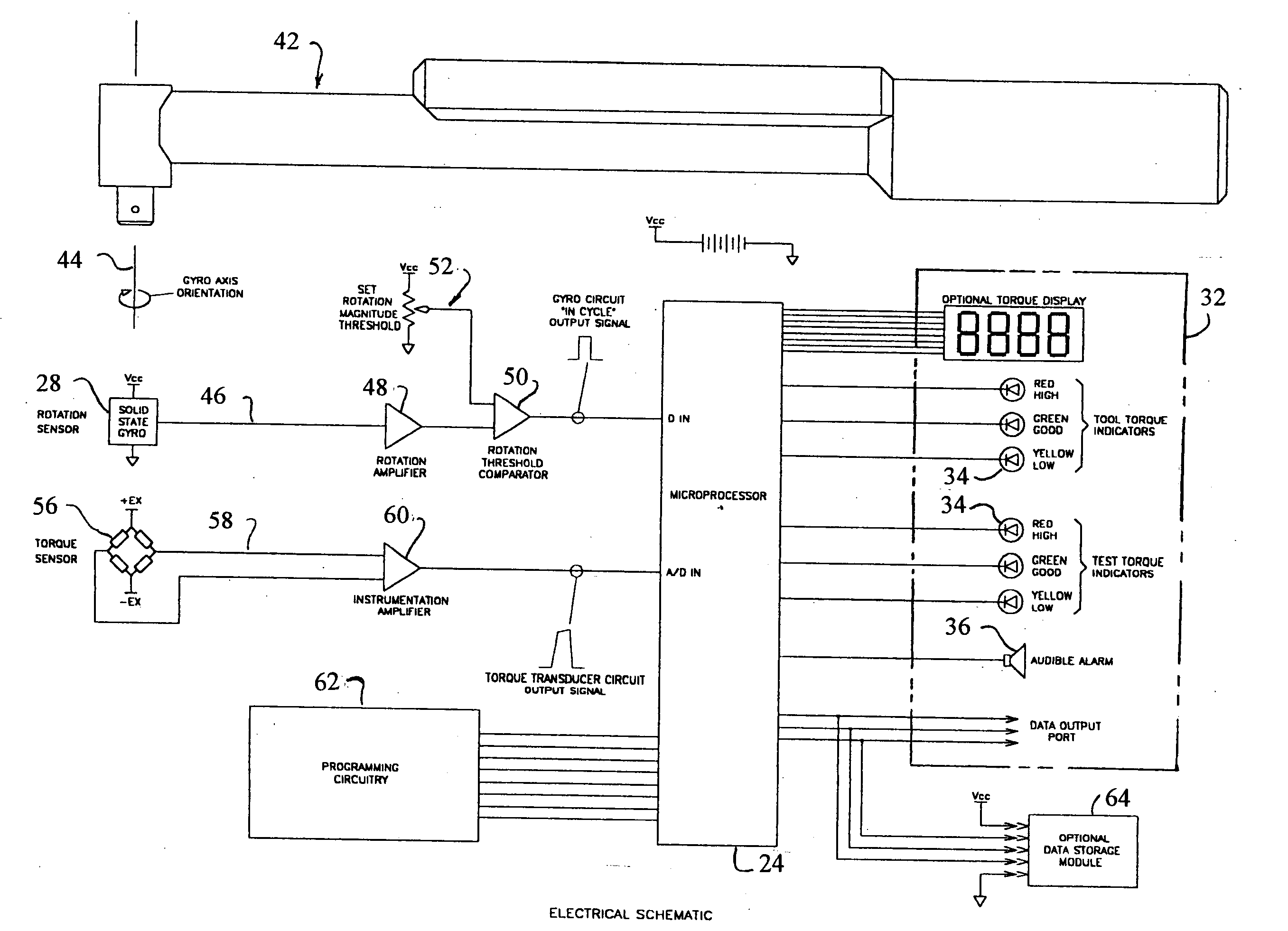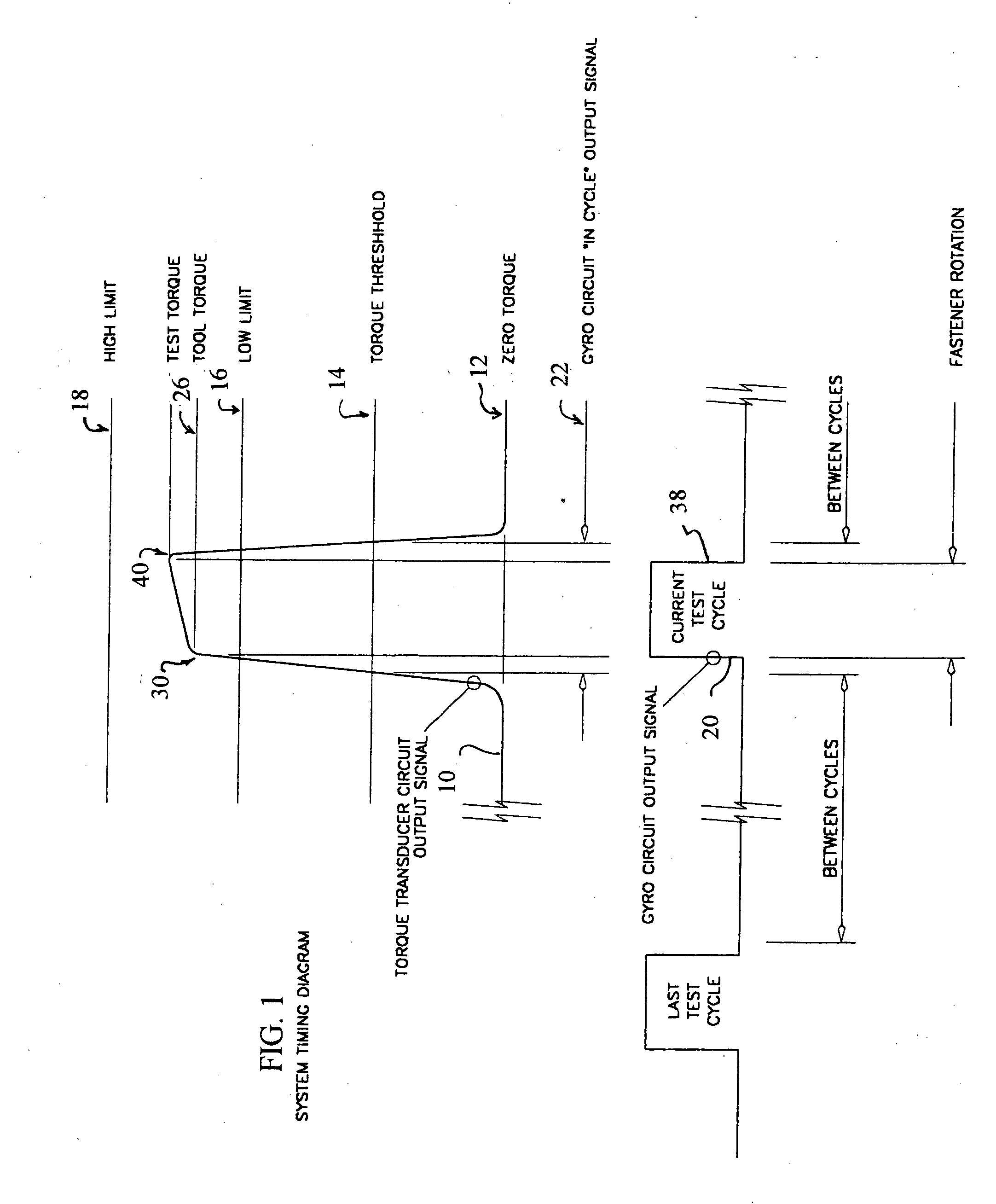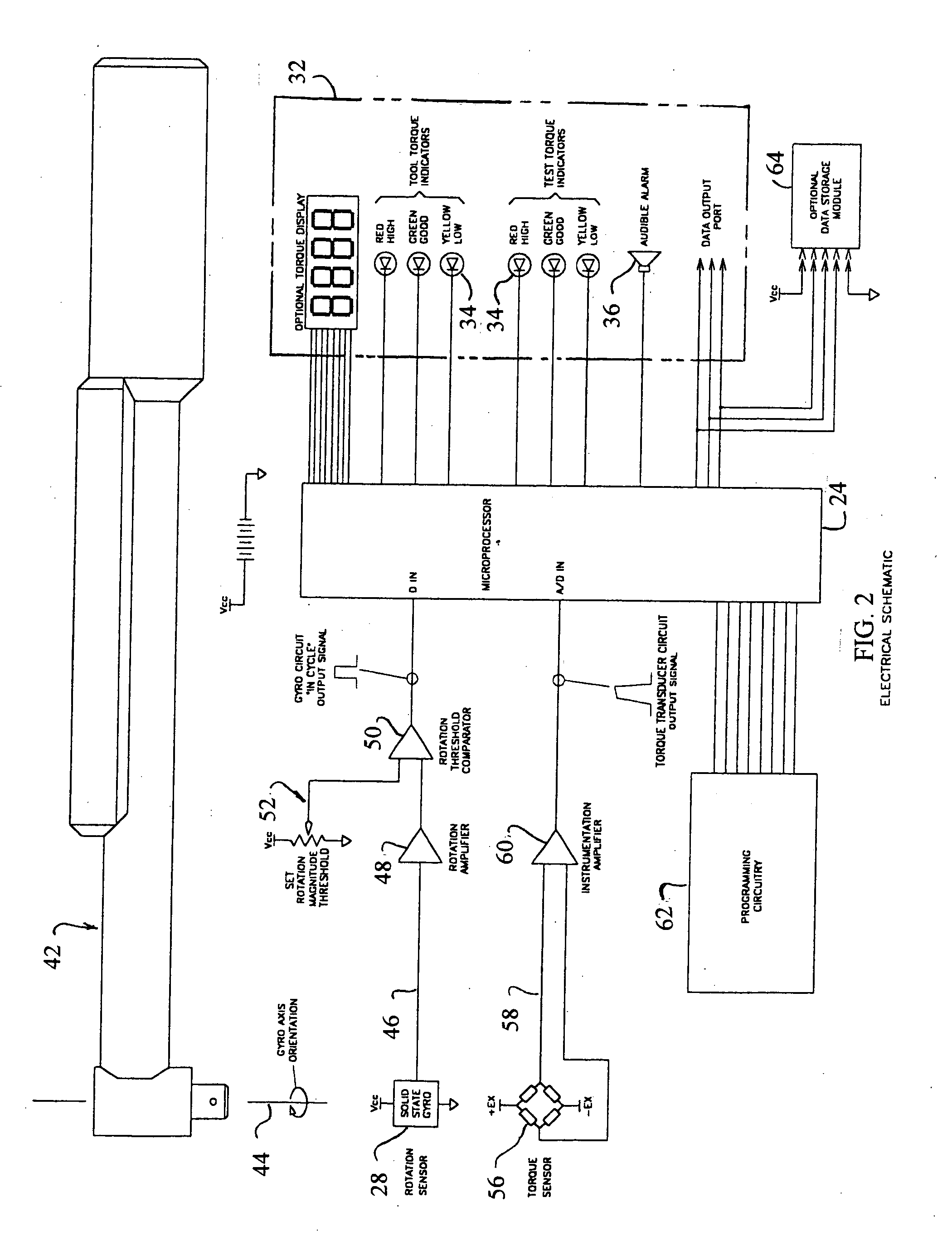Position sensing electronic torque wrench
a technology of electronic torque wrench and torque sensor, which is applied in the direction of wrenches, screwdrivers, manufacturing tools, etc., can solve the problems of low torque condition that may not provide enough friction to keep the fastener in place, immediate or eventual failure of the fastener, and serious safety problems, etc., to achieve high torque and high torque
- Summary
- Abstract
- Description
- Claims
- Application Information
AI Technical Summary
Benefits of technology
Problems solved by technology
Method used
Image
Examples
Embodiment Construction
[0008] Referring to FIG. 1, a system timing diagram is illustrated beginning with the tool at rest, so that there is no torque signal 10 being generated by the torque sensors, such as by way of example and not limitation strain gauge sensors, as illustrated along horizontal zero torque line 12. A torque “Threshold” value shown as line 14 can be established by the microprocessor as a percentage of the “Low limit”. The operator can enter a “Low limit” of low torque limit value as illustrated along horizontal line 16 and “High limit” or high torque limit value as illustrated alone horizontal line 18. A test cycle 20 can be started when the operator engages a previously tightened fastener and applies additional tightening torque. The torque signal 10 rises rapidly through the “Torque threshold” value line 14 which activates the data collection portion or subroutine cycle 22 of the microprocessor 24 (seen in FIG. 2). As the increasing torque signal 10 reaches the residual torque value as...
PUM
 Login to View More
Login to View More Abstract
Description
Claims
Application Information
 Login to View More
Login to View More - R&D
- Intellectual Property
- Life Sciences
- Materials
- Tech Scout
- Unparalleled Data Quality
- Higher Quality Content
- 60% Fewer Hallucinations
Browse by: Latest US Patents, China's latest patents, Technical Efficacy Thesaurus, Application Domain, Technology Topic, Popular Technical Reports.
© 2025 PatSnap. All rights reserved.Legal|Privacy policy|Modern Slavery Act Transparency Statement|Sitemap|About US| Contact US: help@patsnap.com



